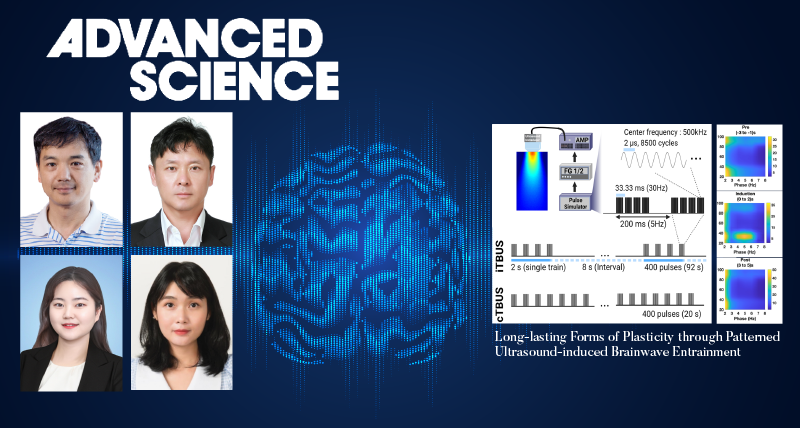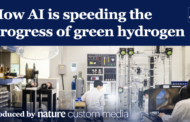One of the crucial characteristics of the human brain is its adaptability to internal and external changes, known as neural plasticity. This feature not only forms the basis for understanding cognitive functions such as memory and learning but also provides important clues for comprehending brain function in various neurological disorders. Currently, various methods are employed to regulate brain function, including invasive techniques like surgical procedures, as well as non-invasive approaches using electromagnetic waves, light, sound, and other forms of neuromodulation.
While invasive methods, requiring surgical procedures, exhibit superior control and therapeutic effects for specific deep brain stimulation, they come with risks such as tissue damage, inflammation, and infection. Recently, there has been a growing interest in non-invasive neuromodulation techniques, such as magnetic and electrical stimulation. However, these methods still face limitations in terms of spatial resolution and penetration depth, making it challenging to target specific brain regions or reach deep brain areas.

Figure 1. Ultrasound Experiment Basic Paradigm and Synchronized Brainwave Graph. In this experiment, ultrasound protocols comprising two distinct stimulation patterns by combining Low-Intensity Low-Frequency (LILF) 30Hz and 5Hz ultrasound were used. The first pattern, known as intermittent TBUS, featured intermittent stimulation with 2 seconds of stimulation followed by 8 seconds of rest. The second pattern, termed continuous TBUS, involved 40 seconds of uninterrupted stimulation. Throughout the stimulation, brainwaves were monitored by analyzing the phase-amplitude coupling between theta and gamma waves, which are two primary types of brainwaves. The accompanying graph illustrates these observed changes.
As an innovative alternative, the research group, led by Dr. Joo Min Park at the Center for Cognition and Sociality (CCS) within the Institute for Basic Science (IBS) at UNIST in South Korea has introduced ultrasound technology that mimics brainwave patterns to enhance the potential of non-invasive neuromodulation. Particularly, the low-intensity low-frequency ultrasound (LILFUS) technology, which has been extensively researched in recent years, overcomes the limitations of traditional non-invasive brain stimulation methods by leveraging the concept of neural plasticity and cross-frequency coupling among brainwaves. This technique aims to transform short-term neuromodulation effects into long-term effects.
Brainwave-patterned LILFUS (low intensity and frequency ultrasound) utilizes ultrasound without generating heat, relying on mechanical bioeffects to provide high spatial resolution. This technology enables precise stimulation of specific brain areas and reaches deep brain regions. Furthermore, its unique ability to induce neural plasticity suggests the potential for long-term modulation of brain function. The brainwave patterns employed by Dr. Park’s research team in LILFUS offer a promising avenue to gain a detailed understanding of brain function related to memory and learning through accurate stimulation of specific brain regions.
Dr. Park’s research team identified the critical role of astrocytic mechanosensitive calcium channels, TRPA1 (transient receptor potential ankyrin1), and calcium-dependent ion channels, BEST1 (bestrophin1), in the bidirectional neural regulation induced by ultrasound, in conjunction with glutamate receptors (NMDA and AMPA receptors). Upon stimulation of TRPA1 by ultrasound, cellular calcium absorption was mediated, resulting in an increase in intracellular calcium concentration. This, in turn, activated BEST1, which caused the release of excitatory neurotransmitters such as glutamate and brain-derived neurotrophic factors from astrocytes, thus regulating neuronal activity. Taken together, these findings provide valuable insights into the mechanisms underlying ultrasound-induced neural regulation and have significant implications for the development of novel therapeutic approaches.

Figure 2. Neural Regulation Mechanism Induced by Ultrasound Stimulation. This figure summarizes the outcomes following ultrasound stimulation. Low-intensity brainwave-like pattern ultrasound stimulation sequentially stimulates TRPA1 in astrocytes, leading to BEST1-dependent neurotransmitter secretion. This, in turn, stimulates adjacent neurons, inducing neural plasticity in the neurons. This process briefly describes how changes in cognitive functions associated with pattern-dependent memory and learning, as well as changes in behavioral aspects, become evident.
The research team successfully conducted behavioral experiments aimed at enhancing the motor skill acquisition and memory capabilities of mice through the use of intermittent brain wave pattern ultrasound stimulation. During the experiment, the mice underwent intermittent ultrasound stimulation in their cerebral motor cortex (M1 motor cortex), which resulted in higher food retrieval rates and learning abilities within a short period. The experiment involved retrieving food through a narrow gap behind a transparent acrylic wall. These findings suggest that the use of brain neural regulation technology through ultrasound stimulation has the potential to improve the cognitive functions of the brain.
Dr. Park stated, “This study has not only developed a new and safe neural regulation technology with long-lasting effects but has also uncovered the molecular mechanism changes involved in brainwave-patterned ultrasound neural regulation.” He further conveyed, “We plan to continue follow-up studies to apply this technology for the treatment of brain disorders related to abnormal brain excitation and inhibition and for the enhancement of cognitive functions.”
The results of this study were published online in the international academic journal ‘Science Advances‘ on February 24, 2024.
Joo Min Park
Professor, Department of Biomedical Engineering, UNIST
IBS Center for Cognition and Sociality
E: joominp@ibs.re.kr
William I. Suh
Public Information Officer
IBS Public Relations Team
E:willisuh@ibs.re.kr
Story Source
Materials provided by Institute of Basic Science.
Journal Reference
Ho-Jeong Kim, Tien Thuy Phan, Keunhyung Lee, et al., “Long-lasting Forms of Plasticity through Patterned Ultrasound-induced Brainwave Entertainment,” Science Advances, (2024).












